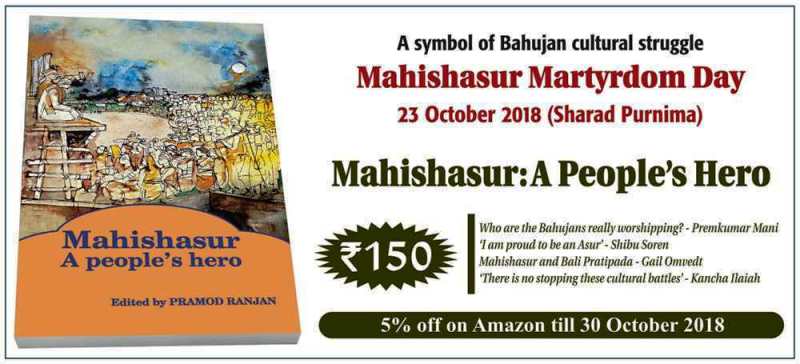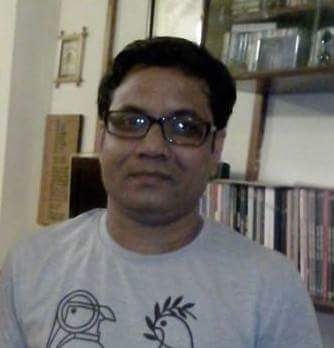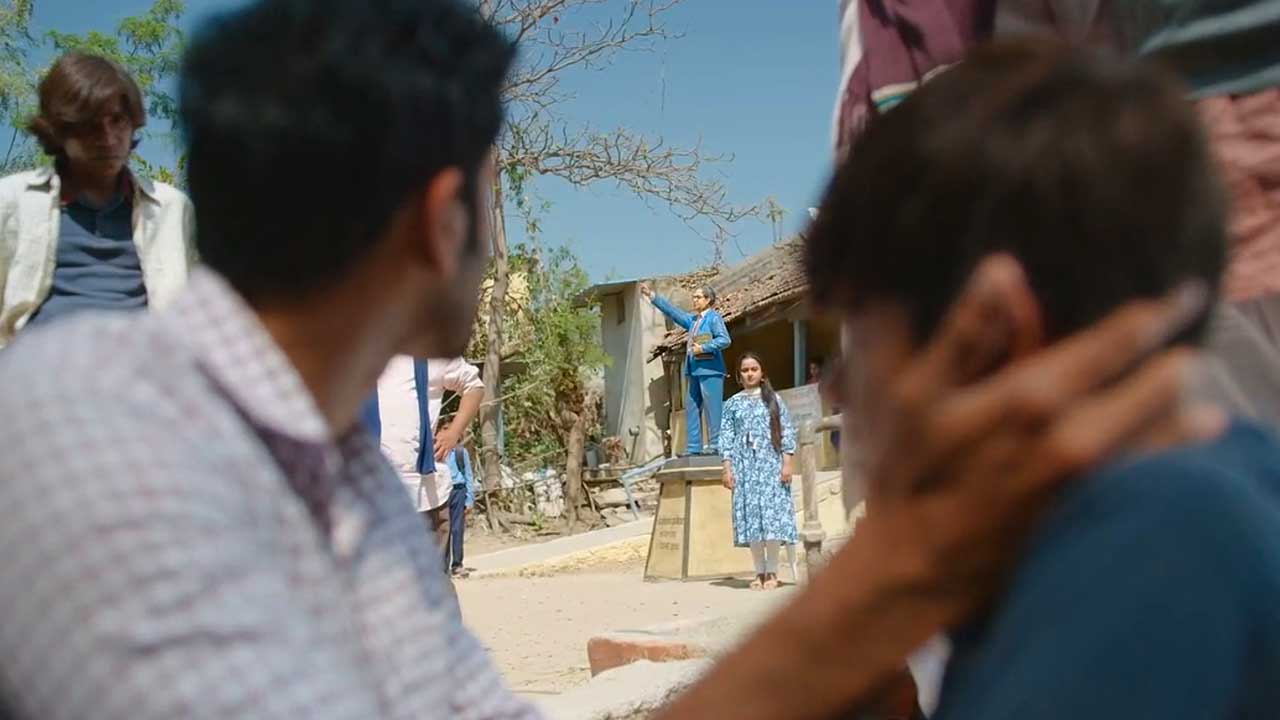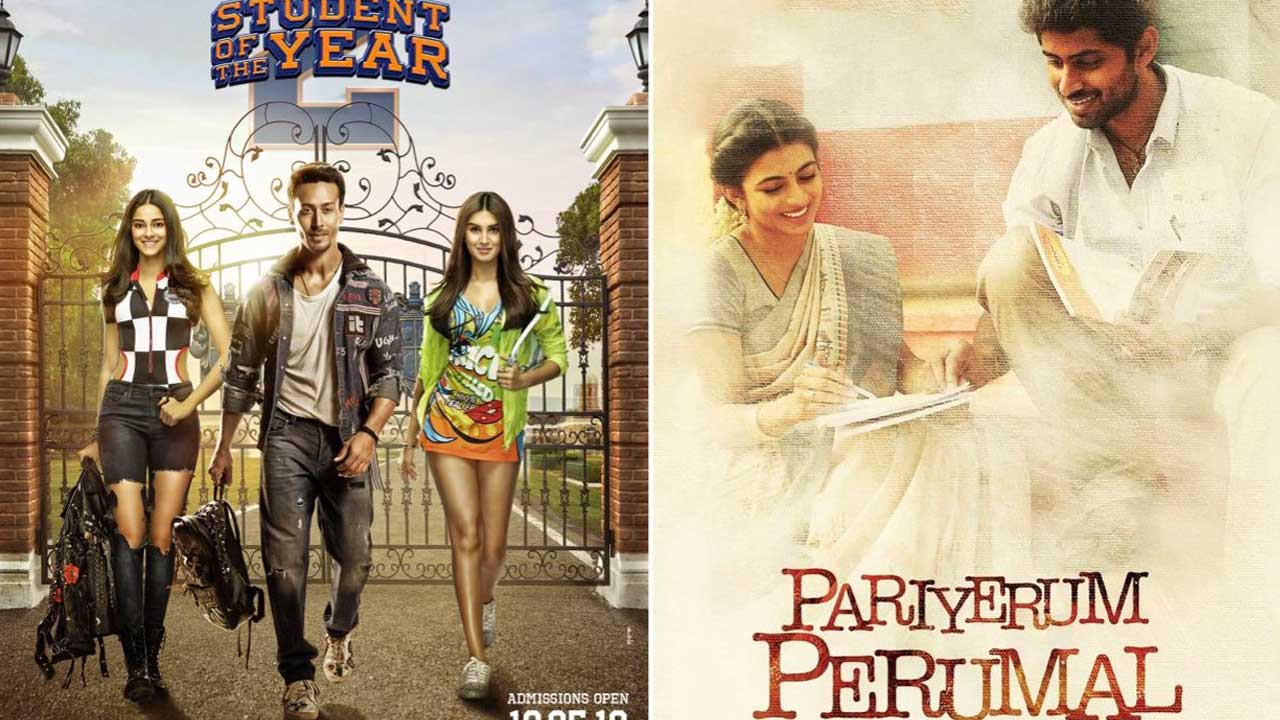Based on the history of denotified and nomadic castes
It is said that the total budget of the film was around Rs 300 crore, which makes it the costliest Indian film. It has been released globally in Hindi, Tamil, and Telugu in 3D and IMAX formats. It is a unique film in the history of Indian cinema. Its story is based on Thugs, i.e., the anti-heroes, of the British era. It looks for a hero in the anti-hero. A film with this storyline could not have been produced in the British period. It is also true that the communities which have been portrayed as heroes in the movie are leading a slave-like existence even today.
As it is a Yash Raj film, entertainment has been taken care of. The world has seen the life and times of the daredevil thugs on the big screen but producing such a mega-budget film on denotified and nomadic tribes is no mean achievement.
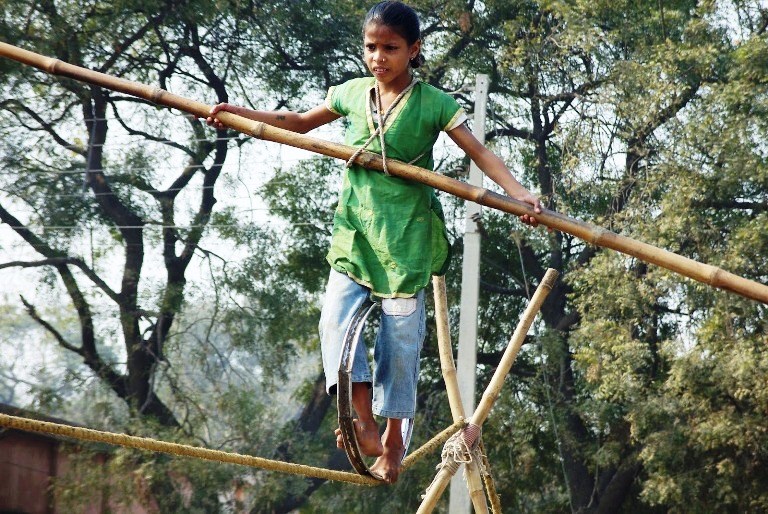
All appreciated their valour
It is a historical fact that the tribals, who took on the British, were sometimes branded as Thugs and at other times as Pindaris. Both were British labels. These tribals were declared criminals under a law. Here, it would be pertinent to mention that members of the denotified tribes embraced Hinduism, Islam, and Sikhism as per their convenience. However, their community feeling was so strong that communalism could never take root among them. That is why they could retain their identity as Pindaris for such a long time. Their unity and valour had made life difficult for foreign traders. The Pindaris and the Thugs became legends. Thousands of horror tales were woven around them. They were considered as real Gabbar Singh of India. Even their name was enough to send shivers down the spines of rapacious foreign traders.

Pindaris were trouble for the British even before 1857
The British government was so sick of the Pindaris that it was ready to go to any extent to eliminate them. It wanted to take concrete steps against them as they were challenging the image of the Whites as an invincible race and thus coming in the way of establishing their superiority over the natives. However, it was easier said than done. Pindaris had political links with the native rulers. They had been outsourced the task of fighting by the needy native Rajas and Maharajas. They joined the military services of different states, right from south to central India. They worked without any compensation for the Maratha army, on the condition that in case of victory, they would get a fixed share in the spoils. According to the British, the Pindaris were a gang of looters in the Maratha army. Their valour was unmatched. Impressed by their abilities, the Maratha army began hiring their services when Bajirao I came to power. To suppress the Pindaris and destroy Maratha power, in 1871, Lord Hastings sowed seeds of distrust among the Pindari chieftains and through alliances and subsidiary alliances enlisted the services of the native rulers to take on the Pindaris. The native rulers, which fell into the British trap, began spying on the Pindaris who were part of their armies. Under the leadership of Hastings Hislop, an army comprising 1,20,000 soldiers and 300 cannons encircled the area dominated by the Pindaris and decimated them. Thousands of Pindaris were killed, or taken prisoners or forced to seek refuge in the forests.
A leopard killed Chitu, a brave Pindari and a great organizer in the forests of Assorgarh. Wasil Muhammad committed suicide in prison. In those days, Chitu was a terror for the British. He was born into a Jat family in a village near Delhi. Dobbal Khan made him his slave and then his son. His son Barun was the headman of Durrah. Karim Khan was given the estate of Ganeshpur in Gorakhpur district. Thus, the Pindari groups broke up and got scattered. At the beginning of the 19th century, they invaded Mirzapur, Shahabad and Nizam’s territory and went on a rampage. Lord Hastings sent an army to combat them, and this battle became the third Anglo-Maratha war.
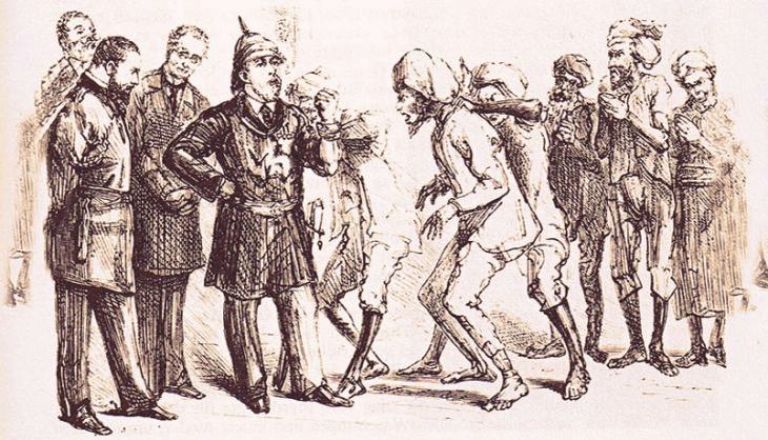
The mutual relationships of the denotified and nomadic tribes are above religion. They were Hindus, Christians, Buddhists, and Sikhs in medieval India and even later. Moreover, this continues to some extent even today. Many of these tribal groups were known as Muslims, but by nature, they respected all religions.
British branded them as criminal tribes
These groups, to some extent, had an international character with Afghans also among their ranks. The martial tribals were regularly recruited into the Mughal and Rajputana armies. When the Mughals became weak, the tribals turned to the native rulers. By and by, the British started destroying native states, and that forced the tribals to take to other means for a livelihood, ranging from farming to trading to looting and thuggery. Vanquished and without means of subsistence, they turned desperate, forcing the women of their families to take to prostitution. Kanjars, Bedni, and Saharia are some such tribes. Whatever has been written on them has been written by others. These tribals changed the course of history, but they do not know their past. The valiant fighters of yore, do not have an inch of land today. The British were hostile towards them and branded them as criminal tribes. The British had also branded the patriots as rioters. However, after Independence, rewards were showered on the patriotic Indians. They got reservations in government jobs. However, the tribals were short-changed. They even lost their identity. Now, let us turn back to the era of the British, the age of the Thugs and talk about the Rupees 300 crore film and the book on which it is based.
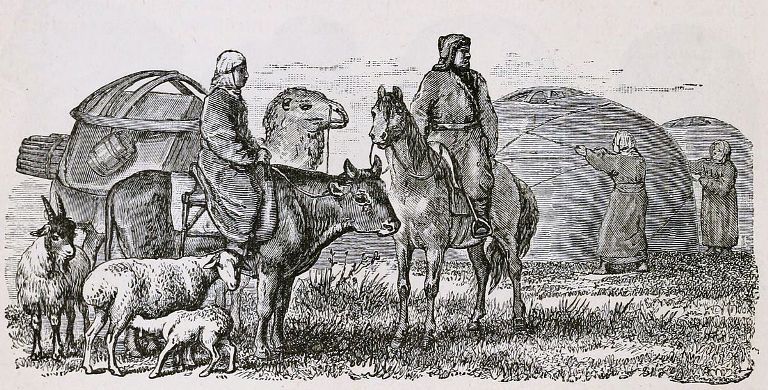
The film is based on Confessions of a Thug, an 1839 novel by Philip Meadows Taylor. The book is about Behram Ali, who had become a pain in the neck for the British between 1770 and 1805. In the novel, which was a bestseller of its times and continued to be a rage up to the middle of the 19th century, the character representing Behram Ali is Ameer Ali. Queen Victoria had also read the novel. Behram was hanged in the year of the publication of the novel.
Even Rudyard Kipling could not stop himself from adopting the storyline of the novel. In his book Kim, he changed the place of the battle and the parties involved. There were only two parties in Confessions of a Thug – the British and the leader of the Thugs and his gang. However, in Kim, the rival parties were Britain and Russia, and the Great Game was played between them in Central Asia. The novel shows the various colours of India through the cultural resistance of the residents of Central Asia to the Great Game. Some tribes succeed in teaching a lesson to the two superpowers. It is said that this novel has in its backdrop the Second Afghan War. The novel emerged at the top in the Big Read Survey conducted by the BBC in 2003.
When will they emerge from the oblivion?
My knowledge about the denotified and nomadic tribes is based on personal experience. During my student days, I frequently met students from these communities and got to learn their problems from close quarters. They got to know me, and I tried to understand them. I found them caught up in a sea of anger, struggle and hopes. They were associated with movements for securing their Constitutional rights, including citizenship and voting rights. However, all their efforts were in vain. One day, I happened to meet Bhushan Pardhi. During the course of the conversation, I asked him about his struggle, which, those close to him described as ‘battle for light and hopes.’ While rubbing a half-burnt cigarette on the grass, he said, “We could not understand that our dreams were made of glass and the world of stone.” He stared at the sky, where blue clouds were rushing by. They were probably in a hurry to unburden themselves somewhere. In a sombre voice, he said, “I don’t know when the clouds of our hopes will give rain. We live in this country but do not belong to it? Till when we will have to live in oblivion? When will we get our identity?”
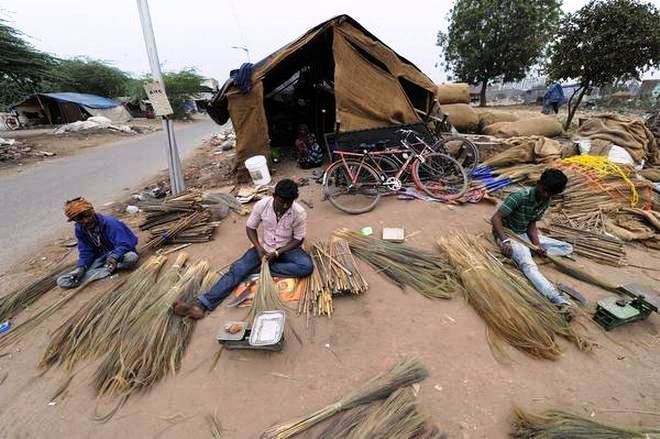
As discussed above, this question does not involve Bhushan Pardhi alone. More than ten crore members of denotified tribes are asking the same question. Moreover, they have been asking this for the past many generations. Since Independence, scores of them have been punished with death for crimes they had never committed. And that was only because they were branded as criminals. Today’s generation is not only posing this question to the government but also history. Tribals, in general, were also victims of injustice but at least on some occasions, soothing balm was applied to their wounds. However, the wrong done to the denotified and nomadic tribes was never righted.
Indian Constitution came into force in 1950, and with that, India formally became a republic. Talking about this achievement, Dr Ambedkar had said, “The soul of democracy is the doctrine of one man, one vote. Unfortunately, democracy has attempted to give effect to this doctrine only so far as the political structure is concerned … [i]
Even 12-year-old kids had to mark attendance in police stations
Babasaheb’s comment was of profound significance. He was not satisfied with the doctrine of one man, one vote. He realized that it was incomplete. He was sad that a person’s identity had been confined to a vote. However, then, and even now, some crores are yet to get the right to vote. For them, Independence is just a meaningless word. Nothing has changed in their lives since the British era. Even today, they are viewed with the same suspicion, as they were when India was enslaved by the British. The denotified and nomadic tribes are leading a miserable life as they did earlier. Even now, they are considered born criminals. Their children are branded as criminals as soon as they are born. Writing about this, Ramnika Gupta says, “In the British era, they were declared born criminals and were forced to live behind barbed wires. Even 12-year-old children had to mark their attendance in police stations every day.” [ii]
The British got their habitations encircled by barbed wires and the segregated areas began to be called Tanda. They could not leave the area without permission from the police. The Tandas were of three types – single-wired for ordinary criminals, double-wired for bigger criminals and triple-wired for those who committed serious offences and were called dacoits. Those in the first category had to mark their attendance at the police stations once a day, those in the second, twice a day and those in the third, thrice a day. However, still, the British did provide health and education facilities in these ghettos. However, these facilities were withdrawn after the passage of the Habitat Act of India, 1952. Like other tribal groups, the denotified and nomadic tribes have also done excellent service to the country, which can never be effaced from history.
During the 1857 War of Independence, the Banjaras, delivered weapons to the revolutionaries, using mules to transport them. The Banjaras supplied goods to countries like France, Yugoslavia and other European countries. However, they retained their Gorboli language and their unique costumes. The Rashtrapati Bhavan and Gurudwara Rakab Ganj in Delhi are built on the land of Lakhi Shah Banjara. However, today, the Banjaras do not own even a small patch of land[iii].
The list of ironies does not end here. Surajpal Nangia, a Sansi, says, “Our country won Independence in 1947 but till 31 August 1952 or for five years and 16 days, we led the life of slaves in our own country, and we are still slaves”[iv].
Balkrishna Renke Commission constituted in 2006
Commenting further on this irony, Nangia says, “If things do not change, we will remain slaves in the future too”[v]. In 2006, the government appointed Balkrishna Renke Commission, officially known as the National Commission for Denotified/Nomadic/Semi-nomadic Tribes. The Commission submitted its report to the government in 2008, but no action was taken on its recommendations. Balkrishna Renke Commission had made 72 recommendations for the welfare of these communities. The key ones among them were:
- 10 percent reservation in educational institutions and government jobs
- Separate budgetary provisions
- A separate ministry for denotified and nomadic tribes.
- Permanent Commission for denotified and nomadic tribes.
- Boarding schools for children of denotified tribes.
- They should be provided residential land and houses should be built for them.
The recommendations of the Commission are still gathering dust. In 2015, the Union government, to bring these tribes into the social mainstream, decided to constitute a commission for denotified and nomadic tribes. Its essential features are:
- The commission has a tenure of three years,
- Its terms of reference include preparing a state-wise list of castes belonging to denotified and nomadic Tribes and to suggest appropriate measures in respect of denotified and nomadic Tribes to be undertaken by the Central Government or the State Government.
- The Commission will have a chairman, a member, and a member-secretary.
The government appointed Bhiku Ramji Idate as the chairman and Shravan Singh Rathod as the member-secretary of the commission.
As mentioned earlier, during the British rule, many martial tribes were branded as criminal tribes which made their punishment and elimination easy. The British government did not stop at that. In 1871, it promulgated the Criminal Tribes Act, which covered other tribes creating problems for them. With this, the number of such tribes touched the 500 mark. In 1952, the government denotified these nomadic tribes, and they are no longer described as criminal tribes. They are now called denotified tribes. However, the change in nomenclature has not brought about any substantial difference to their lives.
In Maharashtra, the Padhris are not allowed to live for more than three days in a village and then also they have to live in tents erected under trees or on a flat stretch of land outside the town. If a Padhri dies, the community is not allowed to bury or cremate the dead in the burial ground or crematorium. They throw the dead bodies in the forest.[vi]

Even a cursory study of the history of freedom movement would reveal their sterling contribution. They sacrificed a lot. History shows that these tribes were a part of mainstream society. They provided services like entertainment, transportation, and medical treatment. Banjaras, Gadia Lohars, Bavaria, Nat, Kalbelia, Bhopa, Sikligar, Singhiwal, Kuchbanda and Kalandar were an integral part of society[vii].
The profession of nomadic tribes
Old documents reveal that this community had started performing many difficult tasks for society in the last phase of the medieval period. The Banjaras transported goods (mainly salt and Multani soil) on animals, Gadia Lohars used to move from place to place making tools and selling them, Bavaria hunted animals and sold their body parts, Nats performed dances and stunts, Kalbelias used to entertain people using snakes, Bhopas sang songs on local deities, Sikligars sharpened weapons, Singiwals treated people using broken horns of deer and had an understanding of natural medicines, Kuchbandias made clay toys, Kalandars displayed stunts of monkeys and bear, Odhs dug canals and flattened land, Jagas kept record of the generations of families and Bahurupias and Bazigars entertained people through their magical tricks[viii].
To make democracy meaningful and complete, we need to take care of the communities which have been left behind and create social awareness on the issue. Without this, we cannot build an egalitarian society. The denotified and nomadic tribes are such deprived communities. They fought relentlessly against the British. If Independence has not brought a feeling of freedom, citizenship, right to vote and progress to these communities, then nothing can be worse than that.
Translation: Amrish Herdenia, copy-editing: Ravinder Goel/Lokesh
[i] ‘Vimukt-Ghumantu Bharat Ke Nagrik Nahin Ban Sakte’, Vimukt Ghumantu Adivasiyon Ka Mukti Sangharsh, p 9, ed Ramnika Gupta, Samyik Prakashan, 2016
[ii] ibid
[iii] ibid
[iv] ibid, p 10
[v] Surajpal Nangia, ‘Sansi Hona Jurm Hai’, Vimukt-Ghumanti Adivasiyon Ka Mukti Sangharsh, p 82, ed Ramnika Gupa, Samyik Prakashan, 2016
[vi] ‘Vimukt-Gumantu Bharat Ke Nagrik Nahin Ban Sakte’, Vimukt Ghumantu Adivasiyon Ka Mukti Sangharsh, p 12, ed Ramnika Gupta, Samyik Prakashan, 2016
[vii] Ghumantu Janjatiyan: Abhinn Raha Hamare Samaj Ka hissa Jise Apradhi Banane Ke Doshi Hum He Hain, Rahul Kautiyal, Sayanrah, 17 August 2016
[viii] ibid
Forward Press also publishes books on Bahujan issues. Forward Press Books sheds light on the widespread problems as well as the finer aspects of Bahujan (Dalit, OBC, Adivasi, Nomadic, Pasmanda) society, culture, literature and politics. Contact us for a list of FP Books’ titles and to order. Mobile: +917827427311, Email: info@forwardmagazine.in)
The titles from Forward Press Books are also available on Kindle and these e-books cost less than their print versions. Browse and buy:
The Case for Bahujan Literature
Dalit Panthers: An Authoritative History
